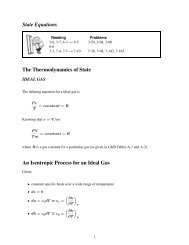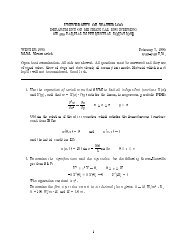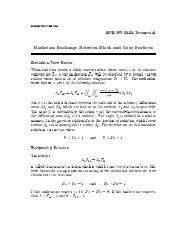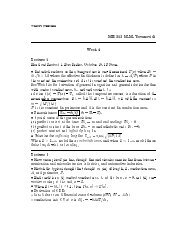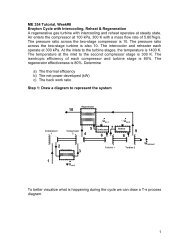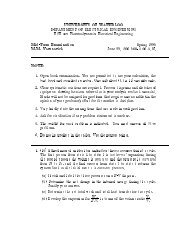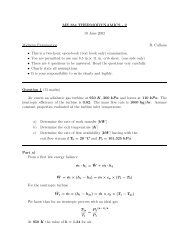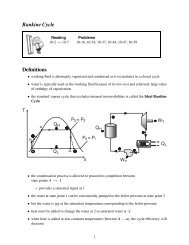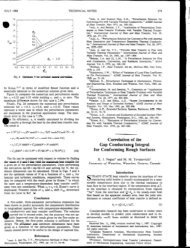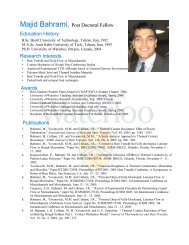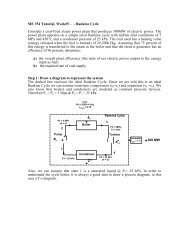UNIVERSITY OF WATERLOO ME 303 Advanced Engineering ...
UNIVERSITY OF WATERLOO ME 303 Advanced Engineering ...
UNIVERSITY OF WATERLOO ME 303 Advanced Engineering ...
You also want an ePaper? Increase the reach of your titles
YUMPU automatically turns print PDFs into web optimized ePapers that Google loves.
PROJ1S99.TEX<br />
<strong>UNIVERSITY</strong> <strong>OF</strong> <strong>WATERLOO</strong><br />
Department of Mechanical <strong>Engineering</strong><br />
<strong>ME</strong> <strong>303</strong> <strong>Advanced</strong> <strong>Engineering</strong> Mathematics<br />
M.M. Yovanovich<br />
Project #1<br />
Project due date is Friday, June 4 at 9:30 AM<br />
The following linear, second-order, nonhomogeneous partial diferential equation<br />
(PDE) was derived using circular cylinder coordinates:<br />
1 @<br />
r @T !<br />
+ S r dr @r k = 1 @T<br />
@t ; t>0; 0 r a<br />
The dependentvariable T (r;t) is the temperature whose unit is K. The independent<br />
space and time variables are: r;twhose units are m and s respectively. The<br />
other thermophysical parameters appearing in the above parabolic type PDE<br />
are: S which represents the uniformly distributed volumetric heat sources; k<br />
which is the thermal conductivity, and which is the thermal diusivity. These<br />
thermophysical parameters are assumed to be constants. The units of S and k<br />
are W=m 3 and W=m K respectively.<br />
The two boundary conditions BCs and the initial condition IC are:<br />
@T(0;t)<br />
@r<br />
=0; T (a; t)=0; T (r; 0) = 0<br />
1) What are the units of <br />
2) Obtain the nondimensional form of the given PDE, the BCs and IC. Use<br />
the following dimensionless parameters:<br />
(; ) = T (r;t)<br />
T r<br />
; = t<br />
t r<br />
;<br />
= r a<br />
where T r is some arbitrary reference temperature, t r is some arbitrary reference<br />
time, and a is the radius of the solid circular cylinder.<br />
1
3) Show that when T r = Sa 2 =k and t r = a 2 = the nondimensional form of the<br />
PDE becomes:<br />
!<br />
1 @<br />
d<br />
@ +1= @<br />
@ @ ; >0; 0 1<br />
4) Consider the steady-state case of the nondimensional PDE when (). Obtain<br />
its solution for the homogeneous boundary conditions specied above.<br />
5) What is the nondimensional (0) and dimensional T (0) temperature along<br />
the axis of the cylinder<br />
6) The heat transfer rate per unit length of the cylinder can be obtained by<br />
application of Fourier's Law of Conduction at the cylinder boundary:<br />
Q = ,k2a @T(r)<br />
@r ; r = a<br />
(a) Nondimensionalize the heat transfer rate and call it Q .<br />
(b) Determine Q from the nondimensional solution.<br />
2



